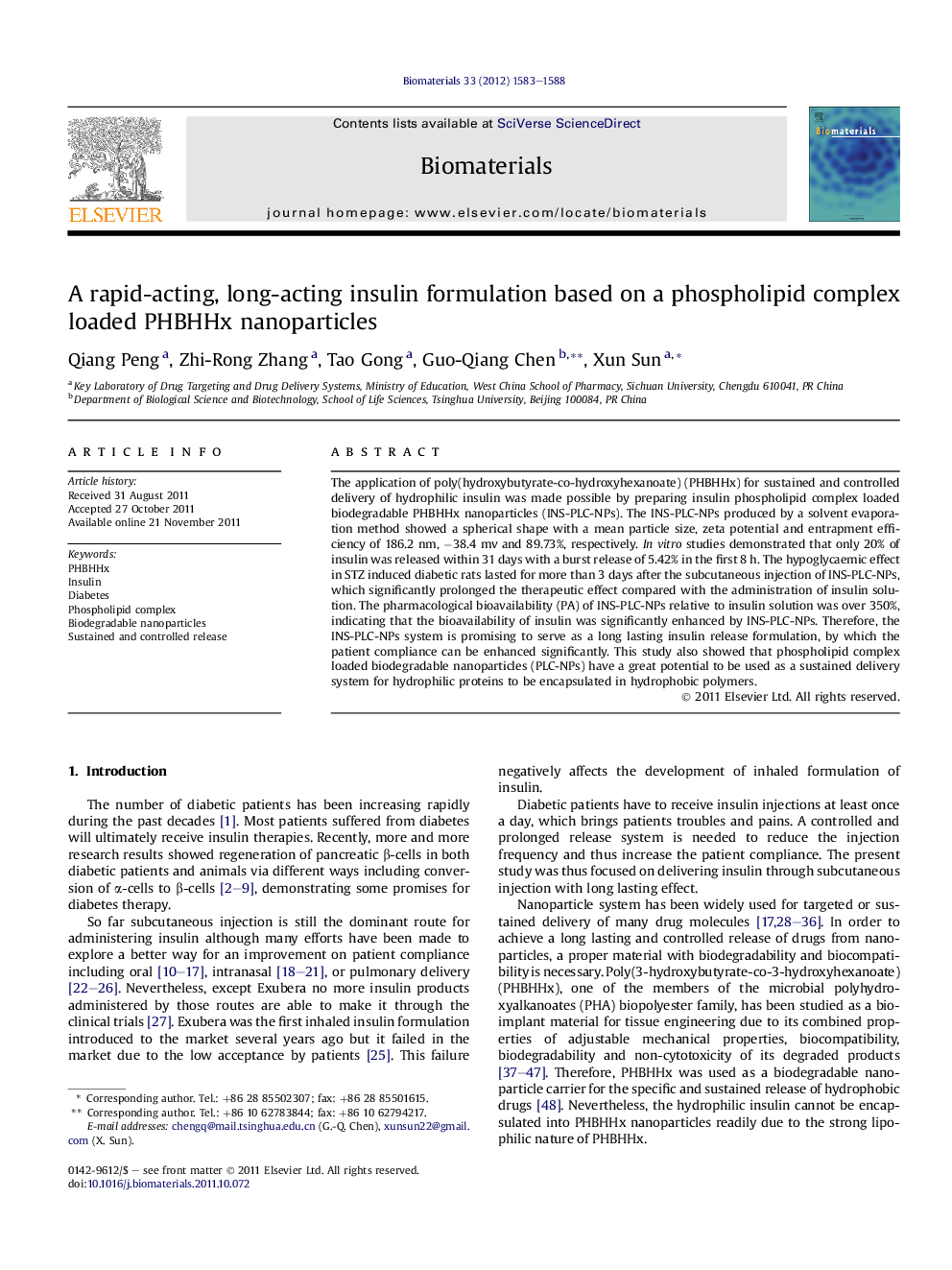| Article ID | Journal | Published Year | Pages | File Type |
|---|---|---|---|---|
| 10229857 | Biomaterials | 2012 | 6 Pages |
Abstract
The application of poly(hydroxybutyrate-co-hydroxyhexanoate) (PHBHHx) for sustained and controlled delivery of hydrophilic insulin was made possible by preparing insulin phospholipid complex loaded biodegradable PHBHHx nanoparticles (INS-PLC-NPs). The INS-PLC-NPs produced by a solvent evaporation method showed a spherical shape with a mean particle size, zeta potential and entrapment efficiency of 186.2 nm, â38.4 mv and 89.73%, respectively. In vitro studies demonstrated that only 20% of insulin was released within 31 days with a burst release of 5.42% in the first 8 h. The hypoglycaemic effect in STZ induced diabetic rats lasted for more than 3 days after the subcutaneous injection of INS-PLC-NPs, which significantly prolonged the therapeutic effect compared with the administration of insulin solution. The pharmacological bioavailability (PA) of INS-PLC-NPs relative to insulin solution was over 350%, indicating that the bioavailability of insulin was significantly enhanced by INS-PLC-NPs. Therefore, the INS-PLC-NPs system is promising to serve as a long lasting insulin release formulation, by which the patient compliance can be enhanced significantly. This study also showed that phospholipid complex loaded biodegradable nanoparticles (PLC-NPs) have a great potential to be used as a sustained delivery system for hydrophilic proteins to be encapsulated in hydrophobic polymers.
Related Topics
Physical Sciences and Engineering
Chemical Engineering
Bioengineering
Authors
Qiang Peng, Zhi-Rong Zhang, Tao Gong, Guo-Qiang Chen, Xun Sun,
